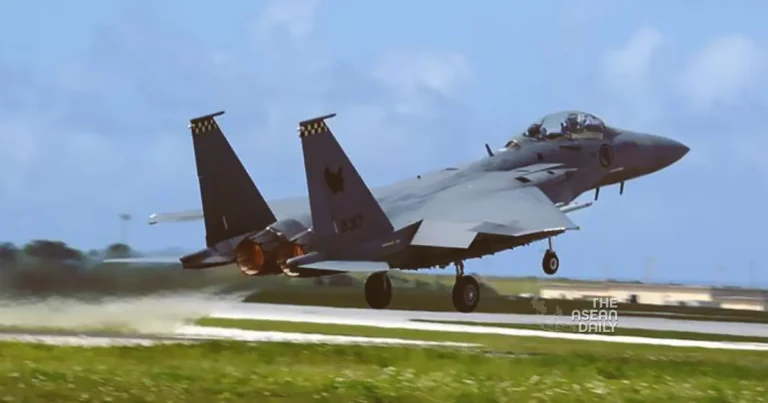27-12-2023 (SINGAPORE) The United States Air Force (USAF) is set to conduct a study on the potential environmental ramifications of infrastructure enhancements required for hosting a Republic of Singapore Air Force (RSAF) detachment with F-15SGs in Guam for the long term.
The upgrades include constructing airfield pavements and an aircraft hangar at Andersen Air Force Base, along with maintenance and utilities buildings, fuel systems, fencing and utilities, roads and parking, stormwater management infrastructure, and earth-covered ammunition storage magazines.
A notice issued on December 13 by base authorities outlines their intention to prepare an environmental impact statement for these proposed upgrades.
In 2019, Singapore’s Ministry of Defence (Mindef) and the US Department of Defence (DOD) signed an agreement for the establishment of an RSAF fighter training detachment at Andersen Air Force Base. The Guam detachment is anticipated to be operational around 2029.
The envisaged upgrades are projected to occur over a span of three to seven years, affecting approximately 84.6 hectares of land – roughly equivalent to the size of Clementi Forest – located by the north-west corner of the expansive Guam base. Guam, an unincorporated territory of the US in the central Pacific’s Northern Mariana chain, is around 4,700 km from Singapore.
Mindef, responding to inquiries by The Straits Times, highlighted the necessity for comprehensive feasibility studies in the establishment of any long-term overseas detachment. The environmental impact statement, part of this process, encompasses environmental impact studies and evaluations of factors like location suitability, training areas, infrastructure, and logistical support.
Mindef affirmed its commitment to collaborate closely with the DOD and relevant agencies to meet RSAF’s requirements effectively and within stipulated timelines.
Andersen Air Force Base, in its December 13 notice, clarified that the upgrades aim to provide essential infrastructure to bolster the US military’s posture west of the International Date Line. This, in turn, enhances the USAF’s capacity to support forces in the region and globally.
Guam, significantly closer to Singapore at 4,700 km compared to Mountain Home Air Force Base in Idaho at 13,680 km, has strategic advantages for the RSAF. Dr. Collin Koh, a senior fellow at the S. Rajaratnam School of International Studies, noted that the F-15 detachment in Guam would provide access to extensive training areas, potentially enhancing the Singapore Armed Forces’ overall capacity for integrated or joint warfare.
Koh also highlighted logistics benefits, stating that an overseas fighter training detachment closer to Singapore allows for quicker response during contingencies and reduces the need for additional support aircraft, such as tankers for refuelling.
The RSAF has conducted short-term training stints in Guam on four occasions, emphasizing the significance of overseas detachments to meet training requirements by overcoming local airspace constraints and conducting high-end, realistic training.




